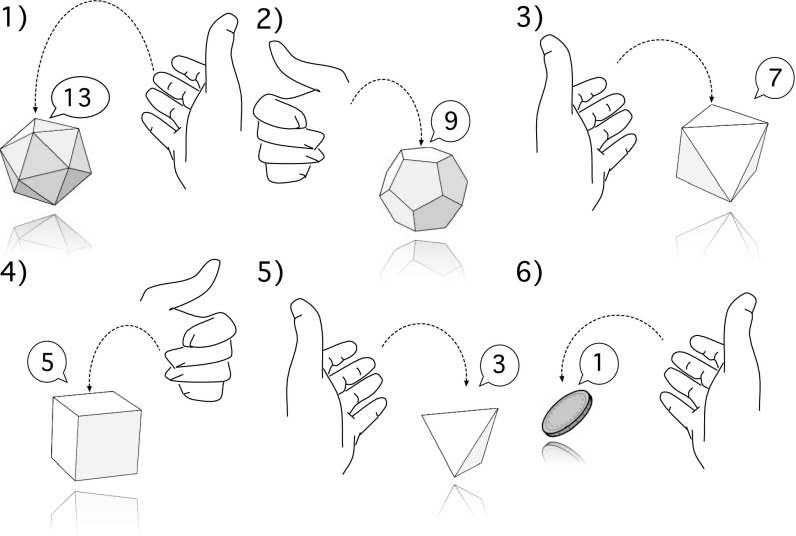Fig. 1.
SSR process. Imagine a set of dice with different numbers of faces. We start by throwing the 20-faced dice (icosahedron). Suppose we get a face value of 13. We now have to take the 12-faced dice (dodecahedron), throw it, and get a face value of, say, 9, so that we must continue with the 8-faced dice. Say we throw a 7, forcing us to take the (ordinary) dice, with which we throw, say, a 5. With the 4-faced dice we get a 2, which forces us to take the 2-faced dice (coin). The process ends when we throw a 1 for the first time. The set of possible outcomes (sample space) reduces as the process unfolds. The sequence above was chosen to make use of the platonic dice for pictorial reasons only. If the process is repeated many times, the distribution of face values (rank-ordered) gives Zipf’s law.

